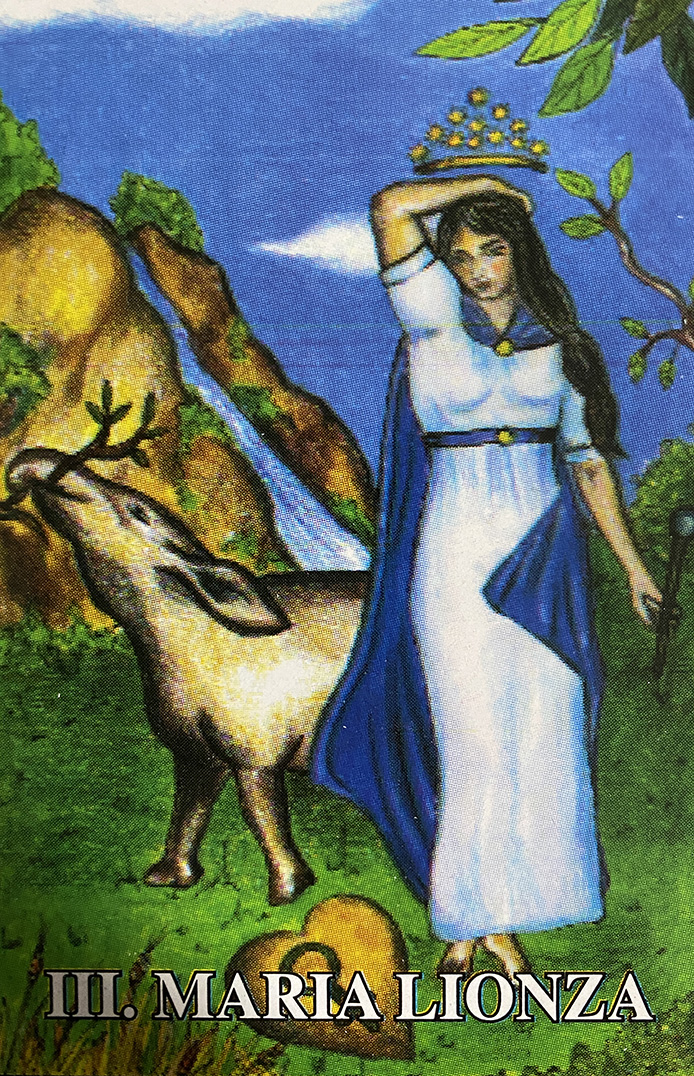Difference between revisions of "Template:Occult.live:Today's featured article"
Occultwiki (talk | contribs) |
Occultwiki (talk | contribs) |
||
| Line 1: | Line 1: | ||
[[File: | [[File:Maria-Lionza-Tarot.jpg|200px|left]] | ||
'''[[ | '''[[María Lionza]]''' is a folk [[saint]] and the central figure in the most widespread new religious movement in Venezuela. The [[cult]] of María Lionza, like many other [[African diaspora religion]]s, is a blend of African, indigenous, and [[Christianity|Catholic beliefs]]. She is revered as a goddess of nature, love, peace and harmony. She has followers throughout Venezuelan society, from small rural villages to Caracas, where a monumental statue stands in her honor. | ||
According to the main legend, María Lionza was born in the 15th–16th century as the daughter of an indigenous chief from the region of Yaracuy. Her father sent her to live in the Sorte mountain. One day, while she was by the river, an anaconda attacked and devoured her. From within the serpent, María Lionza begged the mountain for help. The mountain agreed, María Lionza thus disintegrated and merged with Sorte mountain. María Lionza is sometimes portrayed as an indigenous woman and sometimes as pale-skinned with green eyes, usually surrounded by animals. She is often depicted naked riding a tapir. | |||
'''([[ | '''([[María Lionza|Full Article...]])''' | ||
Revision as of 15:40, 20 August 2025
María Lionza is a folk saint and the central figure in the most widespread new religious movement in Venezuela. The cult of María Lionza, like many other African diaspora religions, is a blend of African, indigenous, and Catholic beliefs. She is revered as a goddess of nature, love, peace and harmony. She has followers throughout Venezuelan society, from small rural villages to Caracas, where a monumental statue stands in her honor.
According to the main legend, María Lionza was born in the 15th–16th century as the daughter of an indigenous chief from the region of Yaracuy. Her father sent her to live in the Sorte mountain. One day, while she was by the river, an anaconda attacked and devoured her. From within the serpent, María Lionza begged the mountain for help. The mountain agreed, María Lionza thus disintegrated and merged with Sorte mountain. María Lionza is sometimes portrayed as an indigenous woman and sometimes as pale-skinned with green eyes, usually surrounded by animals. She is often depicted naked riding a tapir.
